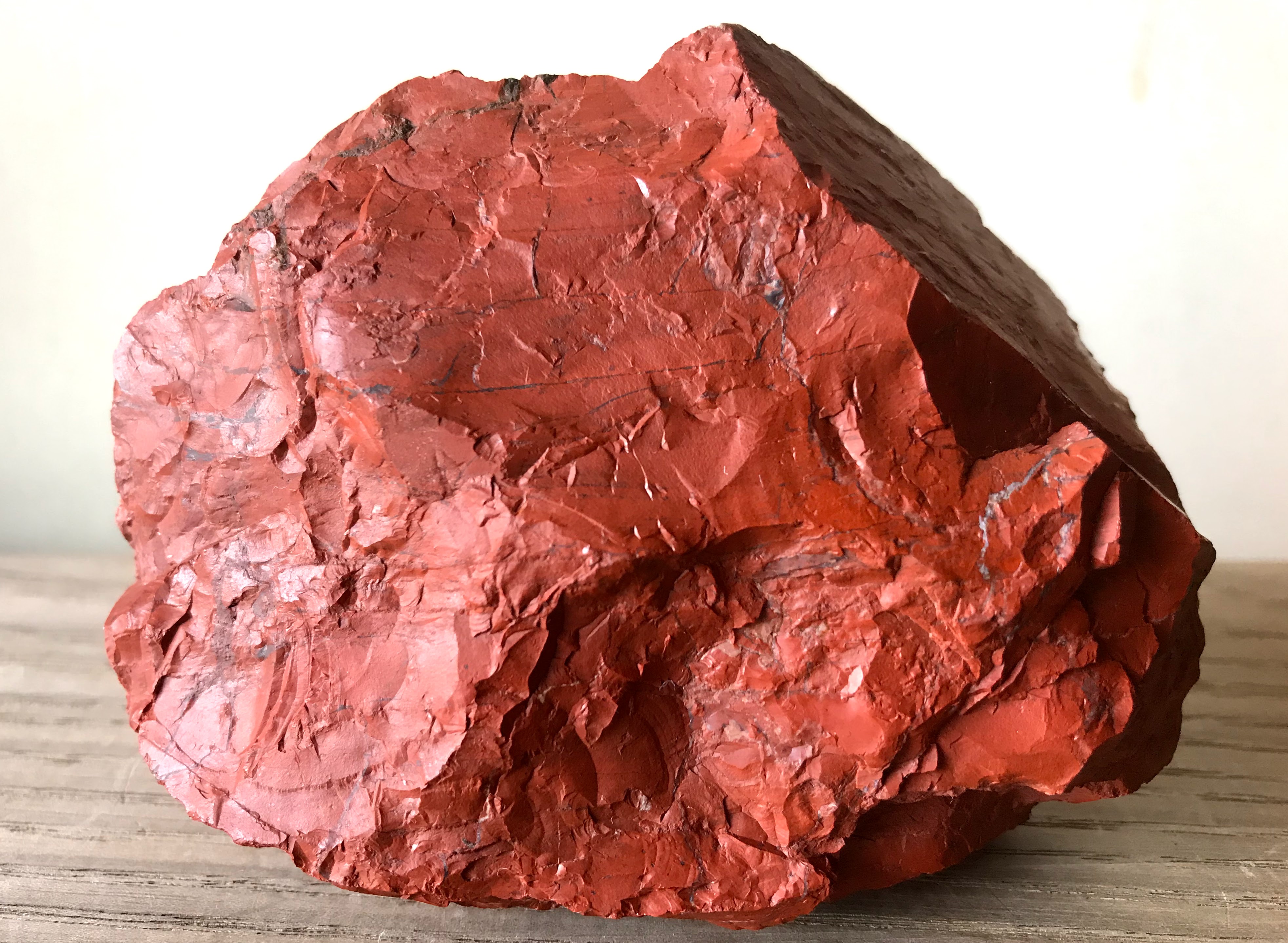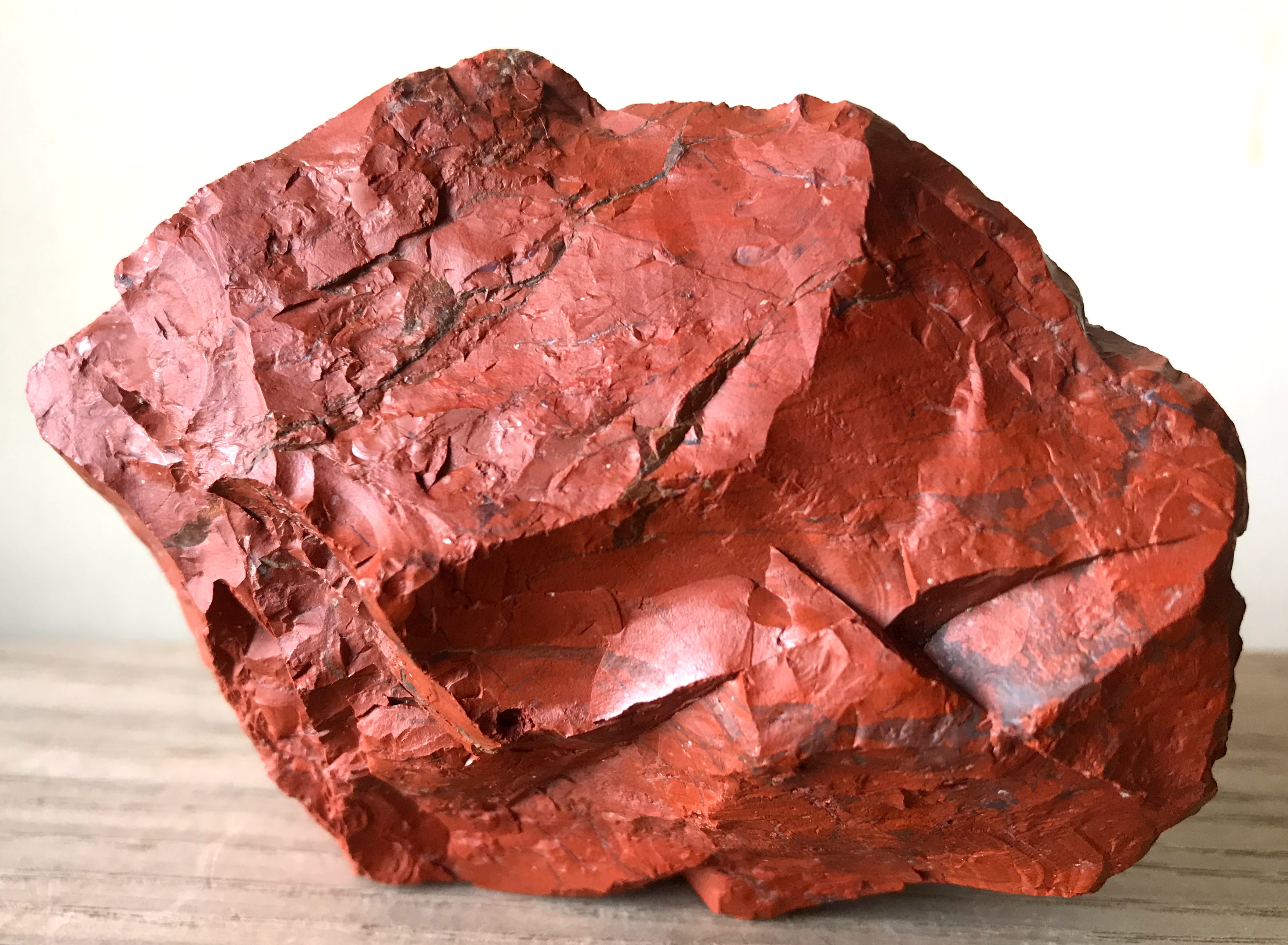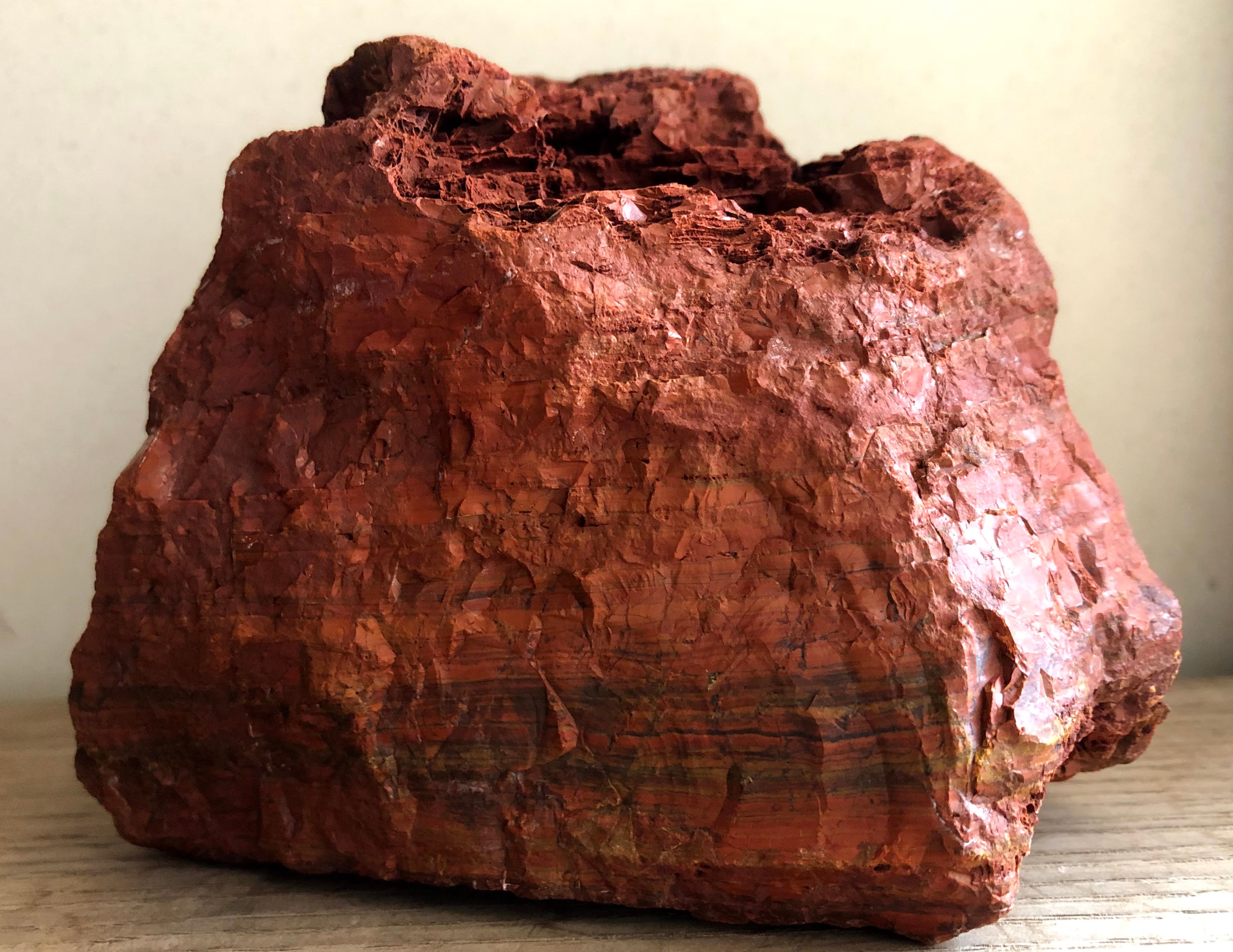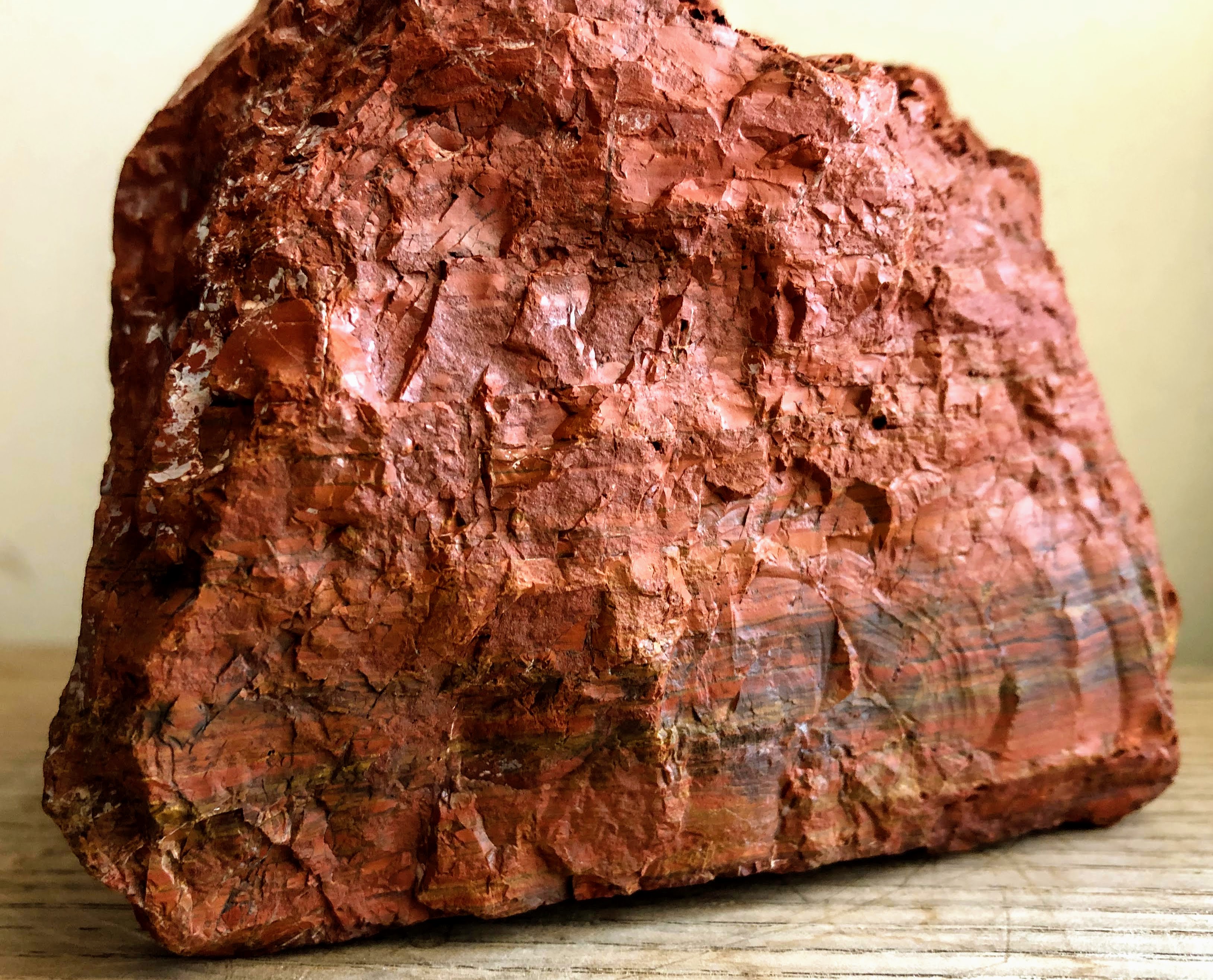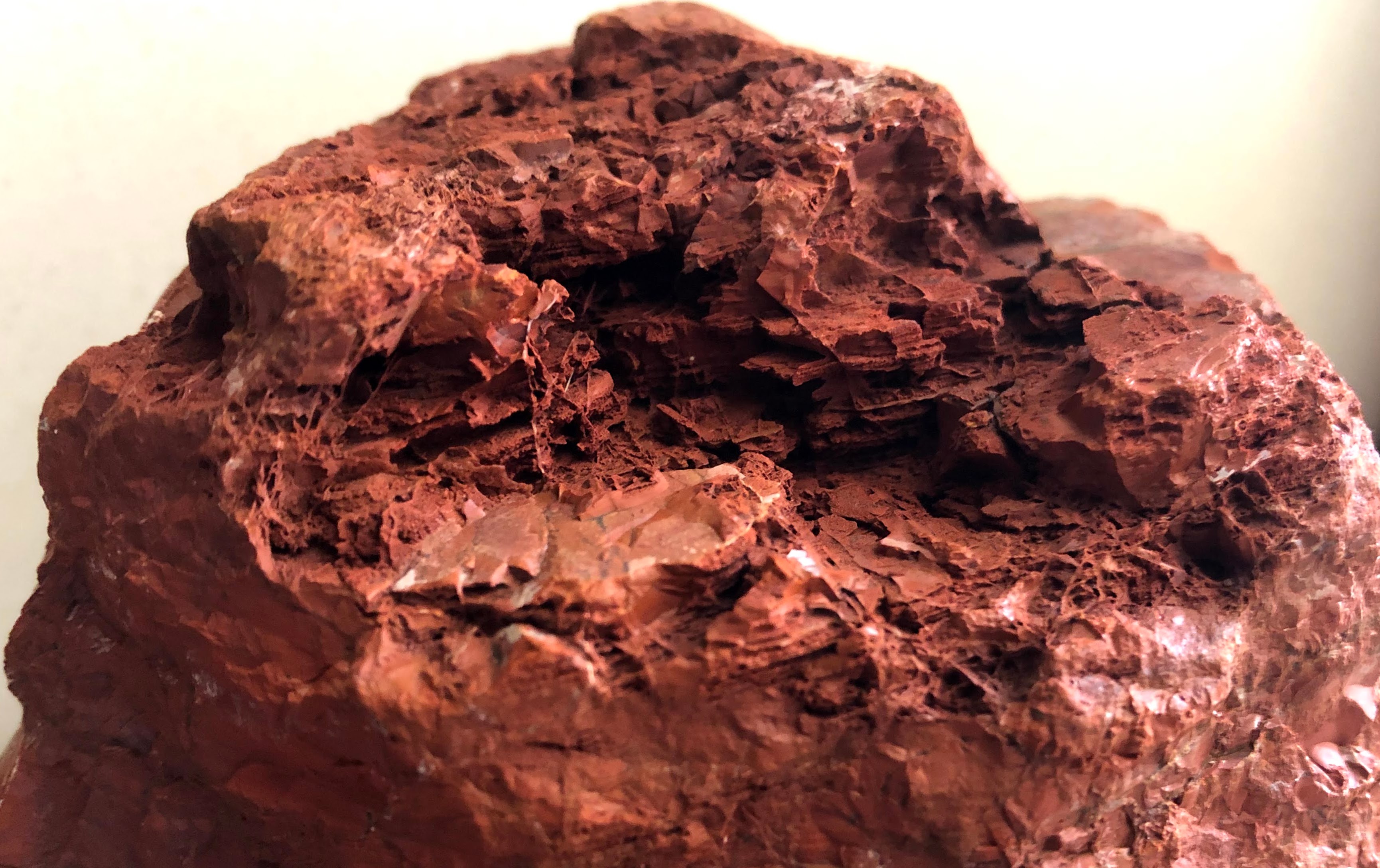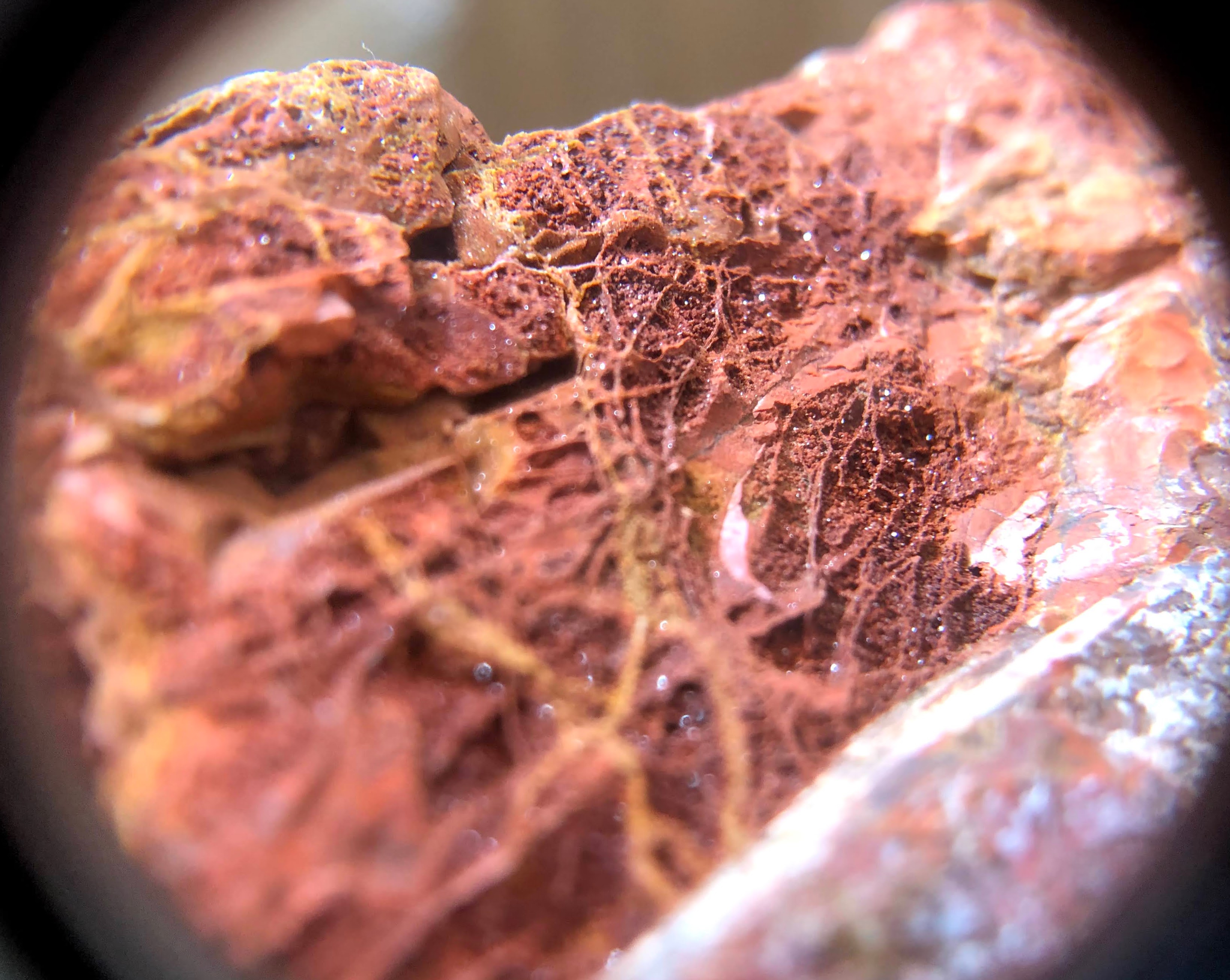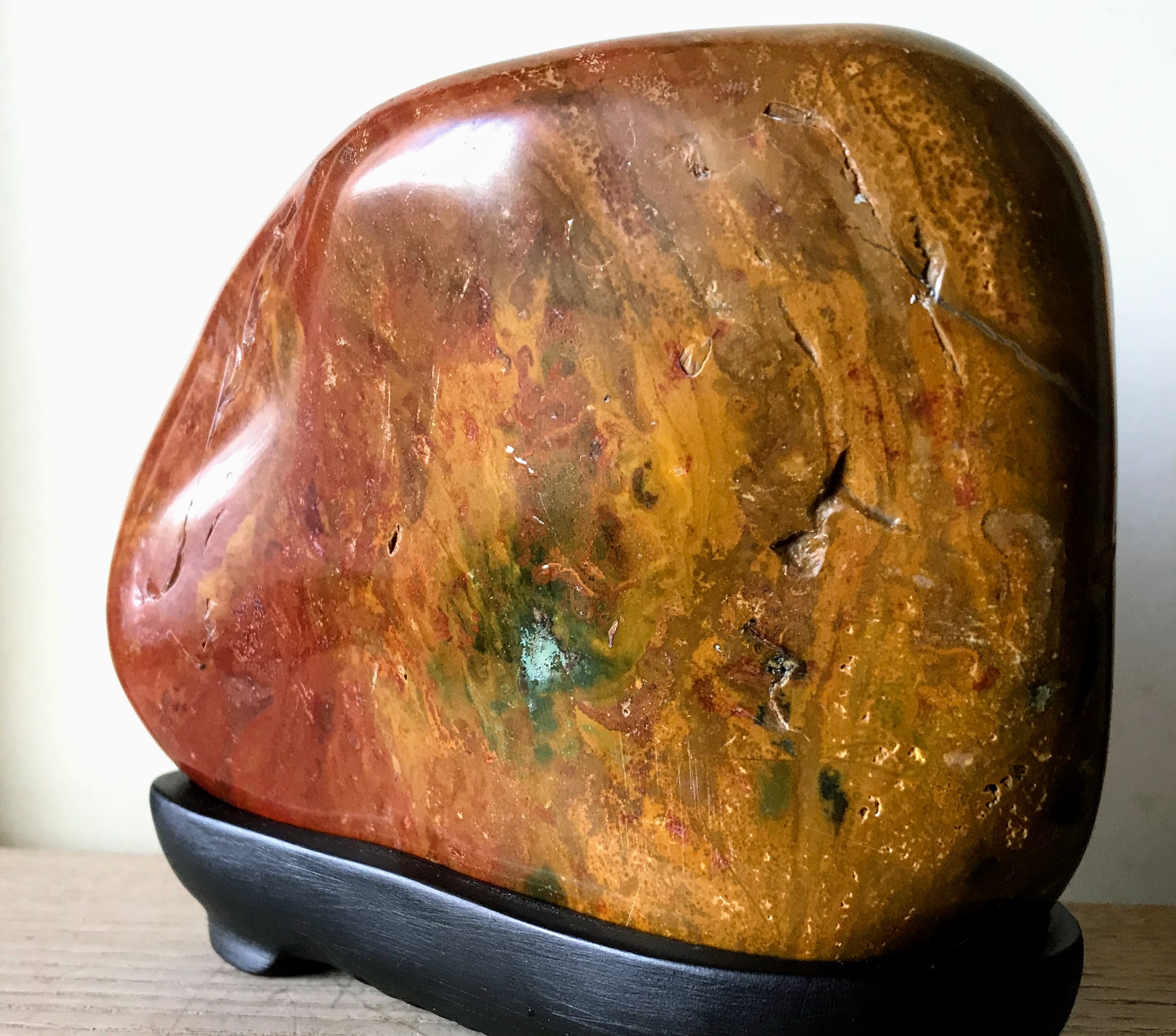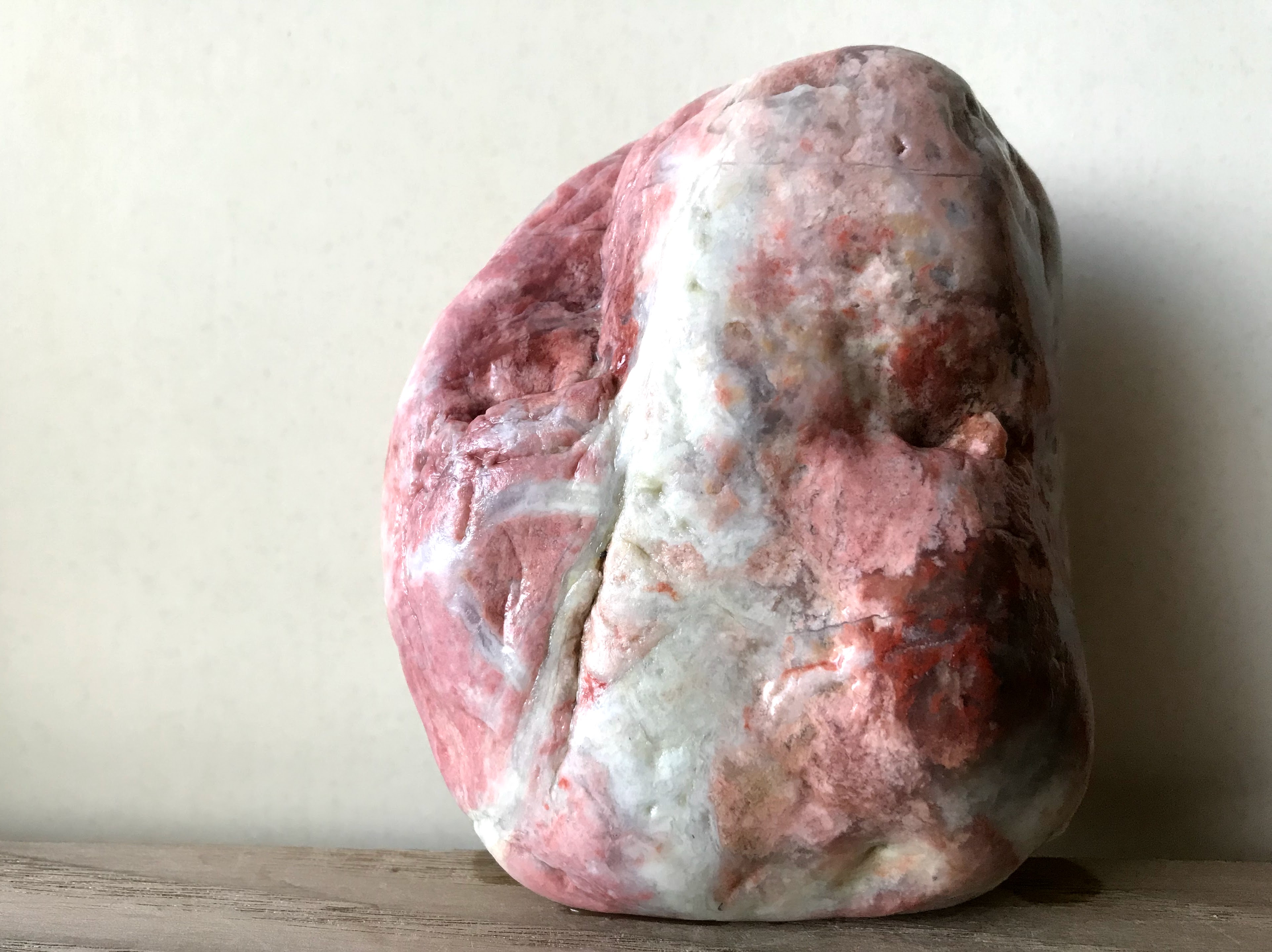Colorful stones-III
Colorful stones-III
Sado red stone
Maybe Sado red stone is the most famous stone in Colorful stone of Suiseki.
In Japanese, it is called Sado Akadama-ishi(佐渡赤玉石) meaning red gem stone from Sado.
Yes, Sado red stone is from along the river called Nakagawa which headstream is a mysterious lake, Sugiike ( 杉池 ) in Sado Island (佐渡島 Sado-shima/Sado-ga-shima) in Niigata Prefecture, Japan.
Sado red stone is categorized to Iron quartz.
It is considered to be from hydrothermal liquid containing iron oxide and abundant quartz.
Actually, from my opinion, it is not usual jasper but more vitreous, solid, hard and having bright color.
It is not the same as usual red jasper mined from other areas in Japan but something special.
Maybe it is the reason why Sado red stone is counted as one in the most famous three stones in Japan. The other stones are Hon Mikage-ishi from Kobe and Sajigawa-ishi from Tottori.
The following stone is one sample of Sado red stone but you can see bright red color and fine texture.
Sado red stone
This is another Sado red stone having a distinctive characteristic.
The first characteristic is layered structure. It may be difficult to see it. However, the whole is layered as if sedimentary rock.
Sado red stone is categorized to Iron quartz and it is considered to be from hydrothermal liquid containing iron oxide and abundant quartz.
Although it is considered to be caused by volcanic activities, it may take time to be piled on that from the opinion by observing this stone.
The second characteristic is the shape near the summit. It looks like weathering ruin and layered structure is also observed here.
Sometimes people say that colorful stones are not good to image landscape because of the color. However, in the cause of the stone, a vermilion color creates specific atmosphere.
The last characteristic is the surface. This is bottom side. The surface looks like Itokake(糸掛) or Itomaki(糸巻) which is a trace of a line of silica running through on the surface. Around there, tiny something is glittering in the sun.It is because this stone seems to be containing enough silica. It is beautiful.
Tsugaru Nishiki-ishi
I would like to introduce other colorful stone. This is Tsugaru Nishiki-ishi from Tsugaru (Western region of Aomori Prefecture) which is the northernmost prefecture on Japan's main island, Honshu.
Actually, from Aomori, many types of colorful and patterns stones are found.
Tsugaru Nishi-ishi is the general term for these stones. And in a narrow sense, Nishi-ishi is jasper containing more that three colors in one stone which is called Five color stone in other areas of Japan.
This jasper has yellow, red, and small green.
So, this jasper has three color but the green are is too small and therefore, it may not be regarded as Nishiki-ishi.
Though it looks like the flame flared up from yellow fire and it is beautiful.
This mixing color is remarkable characteristic of jasper.
Although this is my opinion, jasper from Aomori is volcanic jasper and therefore, green color is not so popular. It is because copper which is the source of green color in jasper could be turned into copper sulfide and its color became blacken.
Mysterious cherry blossom stone
I believe that this is the first public exhibition.
I found this stone in Shonai river in Central Japan.
I am not sure this stone is jasper, agate, or chert, however, it seems to be very good chert or agate because it is transparent.
The wonderful point of this stone is light cherry blossom color.
From semitransparent portion, light pink color comes to the surface and it looks like cherry blossom in full bloom.
Even if changing angle, you can see cherry blossom.
Although I have been searching stones in Shonai river, this kind of cherry blossom stone is only this one.
Therefore, this stone is an exception.
So, I am surprised at a miracle from work of nature.


